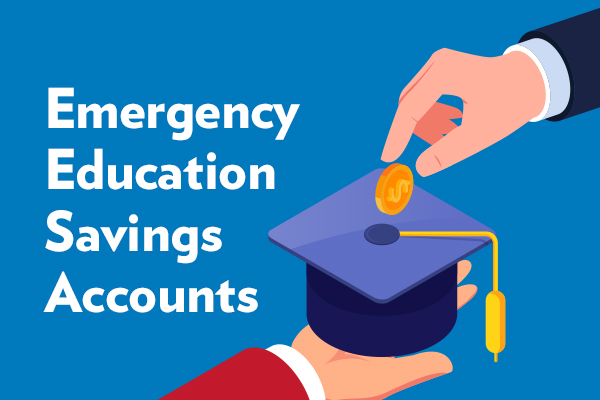Commentary

Pennsylvania Kids and Schools in Crisis: How to Save Them
With a diverse and active student body made up of 5,000 mostly low-income and minority students, Independence Mission Schools (IMS), a network of Catholic schools in Philadelphia, has made its name in attracting parents and teachers who want quality private education. Even though IMS schools are grounded in Catholic principles, 75% of IMS students are not Catholic.
Earlier this month, IMS made the difficult decision to lay off 180 of their staff, as many other organizations have had to do. This came as schools across the state remain closed due to COVID-19.
Amidst the initial rush of school closures in the Southeast, IMS led the transition to distance learning, using the tools of technology to provide an education in spite of difficult circumstances. But children who attend District of Philadelphia schools, many of whom live in the same neighborhoods as IMS students, have and will continue to miss many weeks of meaningful instruction.
Even though IMS has stepped up its efforts and innovated to face the situation at hand, its long term existence—and the collective future of those kids—is threatened by the economic hardships in Philadelphia and elsewhere.
Children’s Scholarship Fund Philadelphia (CSFP) serves over 5,000 kids in 170 schools. Each year, CSFP receives so many scholarship applications, they must hold a lottery to select recipients—8,000 don’t get picked. With an average income of $34,000, CSFP families already struggle to contribute an average of $2,650 per child toward school tuition. Due to COVID-19, 73% of CSFP families are either experiencing a reduction in income or are out of work completely.
Just next door in Camden area, New Jersey, five Catholic schools announced they are closing their doors permanently. It’s expected this trend will continue until the economy can rebound and people can go back work. The same is happening elsewhere in the nation, with school closures reported in Houston.
Recognizing the imminent threat to families and schools, CSFP has established a COVID-19 Emergency Tuition Fund. That should at least temporarily help those in most dire need of assistance to help maintain their livelihood.
Though tragic, it’s not surprising many private schools face extinction. Pennsylvania private schools serve over 200,000 kids, many of them low- to middle-income. Schools like IMS and those supported by CSFP rely heavily on private donations and scholarships to operate, all while competing against “free” public schools funded to the tune of $18,000 per student. It’s a tall order.
Since education dollars don’t freely follow children in Pennsylvania, each child educated outside the public system represents an $18,000 gift to public education. Pennsylvania private schools save public schools billions of dollars each year, while also reducing average public classroom size.
Since education dollars don’t freely follow children in Pennsylvania, each child educated outside the public system represents an $18,000 gift to public education. Pennsylvania private schools save public schools billions of dollars each year.
If private schools are forced to close and many families can no longer afford to stay, public schools will have enormous new costs as they try to absorb additional students. This will be particularly devastating for inner city districts. According to a brand new report from EdChoice, mass school closures could increase education costs in Pennsylvania by $1 billion or more as students flood back to district schools.
According to a brand new report from EdChoice, mass school closures could increase education costs in Pennsylvania by $1 billion or more as students flood back to district schools.
During this time of emergency response and stimulus, lawmakers must consider emergency and long-term education solutions for all Pennsylvania children and their schools. Public charter schools and tax credit scholarships provide much-needed options for thousands of kids who otherwise can’t afford them. To prevent even further losses of learning, these programs should be protected and expanded.
Emergency Education Scholarship Accounts (ESAs) would be even more transformative. A $2,000 emergency ESA for each student could help parents provide for their child’s at-home learning expenses or enable them to provide stability for their kids by keeping them enrolled in their current school.
Pennsylvania schools and schoolchildren can come back and thrive after the pandemic, but only if all available options are considered and championed by our lawmakers. We’ve been thrust into a new era of education, and one thing is certain: one-size-fits-all solutions won’t work. For that, we need bold, new, innovative solutions that will keep our children learning and afford opportunity for all.